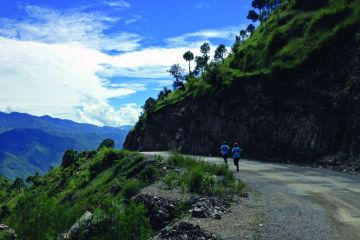
Birds are forest builders. Flitting through the understory and flying above the canopies, they change the landscape and are in turn changed by it. Fruit-eating birds spread seeds across the forest, helping trees regenerate and maintain plant diversity. Nectar-feeding species pollinate flowers, supporting plant reproduction, while insectivorous birds help regulate insect populations, preventing damage to vegetation.
Rainforests, in return, provide birds with food, nesting sites, and stable microclimates.
However, a warming climate is snapping these interactions between birds and rainforests—even pristine forests—according to the new research, “Climate change aggravates bird mortality in pristine tropical forests”, published in Science Advances. Hotter, drier conditions are leading to increased deaths of birds.
In Brazil, the Amazon has pockets of untouched, stable forest for millions of years. In one of those hard-to-get-to locations, deep in the primary forest, there is a site for long-term ecological study, called the Biological Dynamics of Forest Fragment Project (BDFFP). Over the years, research observations at the site have shown that ground-foraging insectivores have experienced the steepest declines, with some species disappearing entirely. The Rufous-bellied Antwren (Isleria guttata) has gone locally extinct, while others, such as the White-plumed Antbird (Pithys albifrons), Scale-backed Antbird (Willisornis poecilinotus), and Black-faced Antthrush (Formicarius analis), have suffered severe population declines. Species like the Wing-banded Antbird (Myrmornis torquata), Thrush-like Antpitta (Myrmothera campanisona), and Reddish-winged Bare-eye (Phlegopsis erythroptera) have also become increasingly rare. Even woodcreepers and leaf tossers, such as the Amazonian Barred Woodcreeper (Dendrocolaptes certhia) and Tawny-throated Leaftosser (Sclerurus mexicanus), have seen significant reductions in abundance.
“These birds depend on stable, humid understory conditions, which are being disrupted by longer, hotter dry seasons,” said Jared Wolfe. He is an assistant professor at the College of Forest Resources & Environmental Science, Michigan Technological University, Houghton, US, and lead author of the Science Advances paper. He is one of the ecologists working on the BDFFP.
Their study provides direct evidence that rising temperatures and drier conditions are driving bird population declines. It examines how climate change is impacting bird survival in pristine Amazonian rainforests.
Some scientists have assumed that intact rainforests provide a stable refuge from climate change but, Wolfe said, their findings challenge this assumption.
Using 27 years of “mark-recapture data” from over 4,200 individual birds, they found that increasingly severe dry seasons, characterised by hotter temperatures and lower rainfall, are significantly reducing bird survival.
“In fact, our models predict that just a 1C increase in average dry season temperature results in a 63 per cent decline in apparent survival across the understory bird community. Longer-lived species were particularly affected,” Wolfe told Fountain Ink
These findings highlight an overlooked impact of climate change: even in the most undisturbed rainforests, species are struggling to adapt to shifting climate patterns, reinforcing the need to integrate climate resilience into conservation planning.
Declines and death are likely driven by reduced insect prey, microclimate changes, and increased physiological stress.
“Loss of key bird species can alter rainforest composition and function, highlighting the need to preserve both birds and their habitats,” said Wolfe.
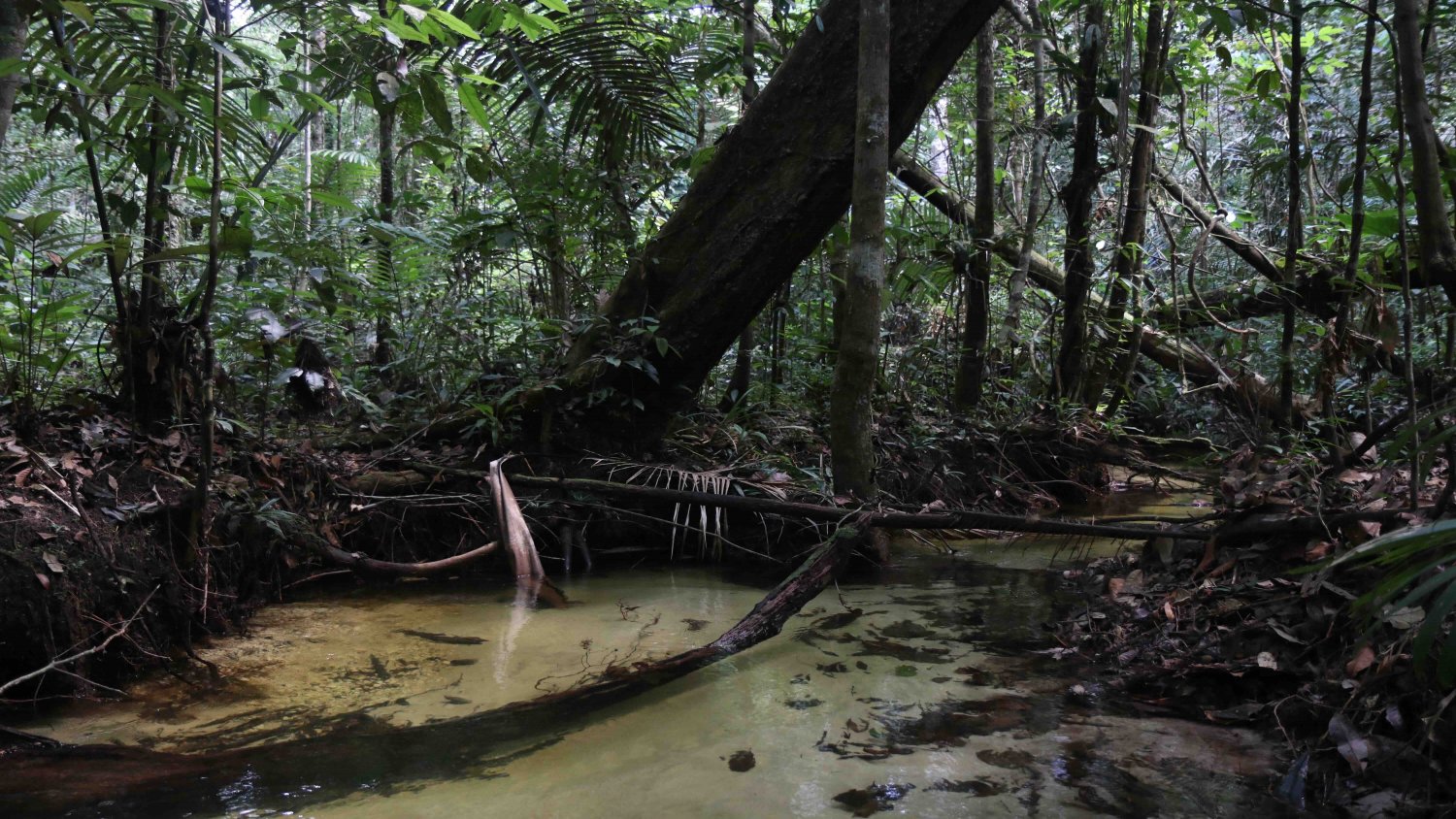
Primary forest floor in the Amazon. Photo: Vitec Jirinec. Title image: The critically endagered Great Indian Bustard of which it is estimated that less than 100 are left. Photo: Dhritiman Mukherjee
Wolfe and his team describe the thrill of conducting research deep inside the Amazon. For weeks on end, he recounts, they lived in the rainforest, sleeping in hammocks strung up under primitive shelters, surrounded by the constant hum of insects and a rich diversity of birds. Their camp was simple, a clearing with a few shelters, a store of dry goods, and a small generator to power their laptops in the afternoons. Bathing meant wading into the nearest creek, letting the cool water wash away the day’s heat and humidity.
Every morning, well before sunrise, they would roll out of their hammocks, strap on headlamps, and hike in the dark to their study plots. At first light, they would open mist nets—lines of 16 nearly invisible nets, each 12 metres long, set strategically to gently capture birds as they moved through the understory.
They worked quickly and carefully, banding each bird, measuring its weight, wing length, and molt status before releasing it back into the forest. Afternoons were spent entering data, exploring the forest, or just sitting quietly, watching troops of monkeys move through the canopy. By evening, when the work was done, they would sometimes break out a coveted bottle of cachaça—a spirit made from fermented sugarcane juice—mix up caipirinhas—a Brazilian cocktail—and swap stories.
Wolfe said it was exhausting, beautiful, and completely immersive; the kind of fieldwork that makes you feel truly connected to the place you’re studying.
Just as researchers adapt their methods and priorities to understand how rising temperatures affect Amazonian birds, those birds themselves have evolved a diverse suite of life history strategies over millennia. By deploying phenotypic plasticity—organisms changing their behaviour, morphology and physiology in response to environmental conditions—they adapt to changing habitats, often prioritising and dispersing environmental risks both across time and among different locations.
Ecologists have a phrase for it: “latitudinal gradient in life history variation.” It refers to a pattern where birds in different parts of the world, particularly across latitudes from the tropics to the poles, have evolved different survival and reproduction strategies based on their environment.
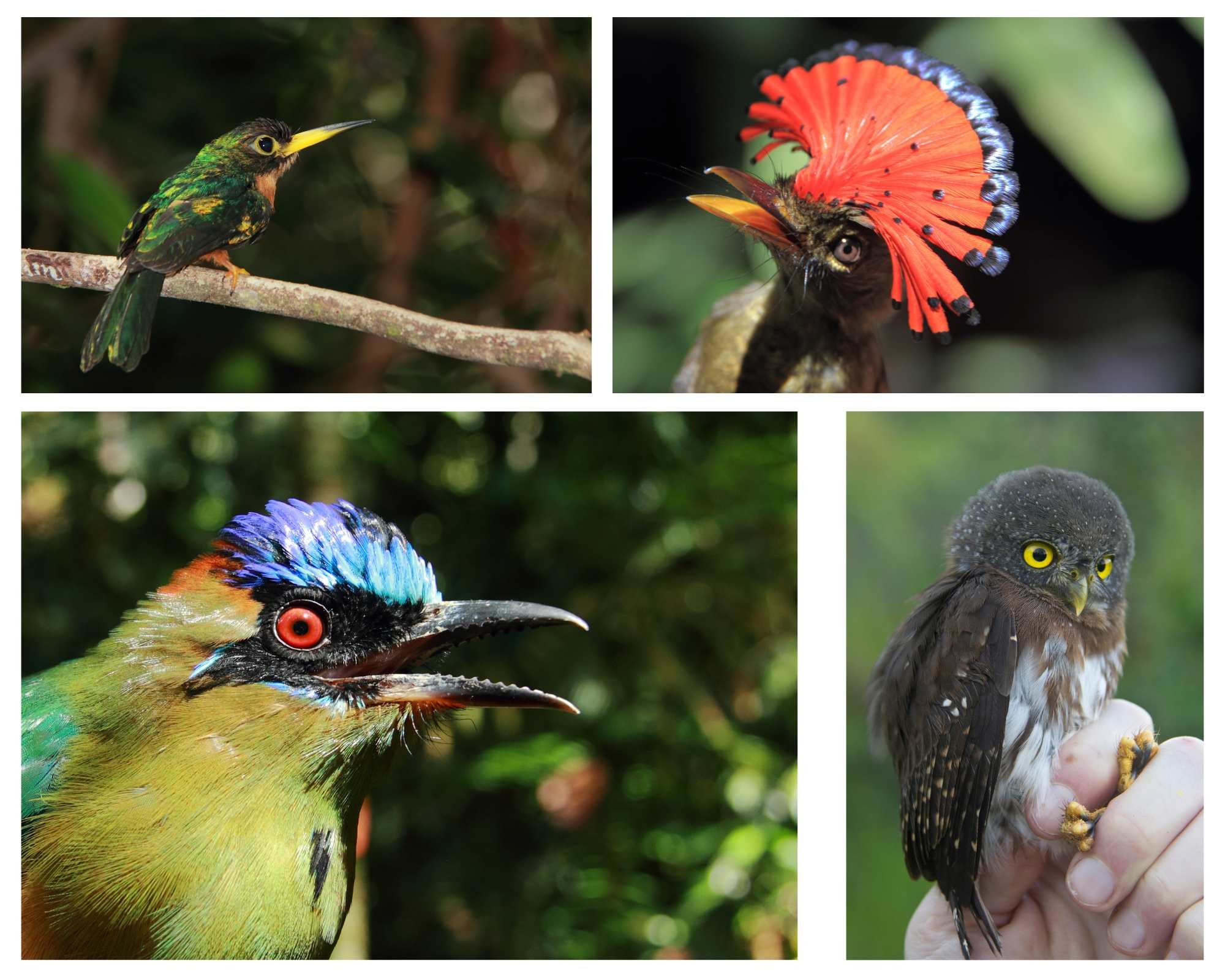 Some of the birds found in the Amazon firest understory:(Clockwise) Yellow-billed Jacamar; Amazonian Royal Flycatcher; Amazonian Pygmy Owl; Amazonian Motmot. Photos: Philip Stouffer
Some of the birds found in the Amazon firest understory:(Clockwise) Yellow-billed Jacamar; Amazonian Royal Flycatcher; Amazonian Pygmy Owl; Amazonian Motmot. Photos: Philip Stouffer
Wolfe said understory birds in the Amazon occupy a stable and humid microclimate beneath the forest canopy, where they have evolved specialised life history strategies that privilege survival over rapid reproduction. Tropical birds, living in stable and biodiverse environments, tend to have longer life spans and put more effort into surviving as adults, rather than producing lots of offspring quickly. They typically lay fewer eggs, invest more in raising each chick, and rely on consistent conditions year after year.
In contrast, birds in temperate regions, where seasons are harsher and less predictable, have shorter lifespans but reproduce more frequently. They lay larger clutches of eggs and raise multiple broods each year, prioritising high reproductive output to compensate for higher mortality rates.
This evolutionary strategy makes tropical birds more vulnerable to rapid climate shifts.
“As climate change intensifies dry seasons, these birds face growing risks because they lack the reproductive flexibility to quickly recover from population declines,” Wolfe said. They don’t stand a chance against the rapidly warming world.
One of the key disruptions is food availability. Many understory birds are insectivores. However, rising temperatures and reduced rainfall are drying out the understory, likely leading to lower insect abundance. As a result, birds must expend more energy searching for food, often with diminishing returns. This increased energy demand, combined with fewer microclimate refugia to escape extreme heat, can lead to physiological stress, weight loss, and ultimately lower survival rates, Wolfe said..
Additionally, as food resources decline, competition among ecologically similar species likely intensifies. Some species, like the Rufous-bellied Antwren, have already gone locally extinct at their site, while others, such as the Black-faced Antthrush, are experiencing severe population declines.
“These shifts suggest that the very conditions that once supported the evolution of long-lived tropical birds are now becoming inhospitable, accelerating biodiversity loss in even the most intact forests,” said Wolfe.
Vitek Jirinec, an ecologist who is a co-author of the paper with Wolfe, said all birds they examined showed lower survival under hotter and drier conditions—most of these declines with high statistical probability. Jirenc works at the Integral Ecology Research Center in Blue Lake, California.
Tropical rainforests are complicated ecosystems, the field conditions are challenging, and their denizens are often elusive.
“Many years of data, lots of funding, and blood, sweat, and tears were required to capture birds repeatedly to get the paper we just published,” said Jirinec.
Bird deaths haunt researchers and some lay people alike. As to why birds are dying in hotter and drier conditions, Jirinec said it “is a whole another research question that could be very difficult to answer. More such efforts might be needed to get at the mechanism.
“But, I would argue that one plausible mechanism is—if hotter and drier conditions shorten the interval over which birds can meet their energetic needs—eat before it gets too hot—or the places where they can do so—eat where it is not too hot for the prey—then lower energy intake may translate into lower survival.”
We zeroed in on climate change as the leading hypothesis explaining why birds in pristine rainforests are disappearing.
Wolfe and his team’s research builds on the previous long-term studies from Panama, Ecuador, and their study site in Brazil, all of which documented declines in tropical resident bird populations, even in intact forests.
By directly linking climate change, specifically hotter and drier dry seasons, to reduced survival, their study provides a key missing piece of the puzzle.
“It confirms that these declines are not isolated events but part of a region-wide phenomenon likely driven by shifting climatic conditions,” Wolfe said.
It took some doing to connect dots on bird deaths and climate change. In a 2020 paper in Ecology Letters, they first noticed enigmatic long-term declines in bird populations at their study site, which prompted them to search for potential causes. Given that global climate change is one of the most pervasive disruptors of biological systems, they investigated whether changes in temperature and rainfall might be linked to these declines. They found striking increases in dry season temperatures and significant decreases in rainfall over the same period that bird abundance was dropping.
“The timing and strength of these climate shifts aligned closely with the patterns of bird loss, particularly among insect eating species, making climate change the most compelling explanation,” said Wolfe.
While other factors, like habitat loss, can contribute to biodiversity declines, their study site is in a pristine forest, meaning climate change stood out as the primary driver of these declines.
“Putting two and two together, we zeroed in on climate change as the leading hypothesis explaining why birds in pristine rainforests are disappearing.”
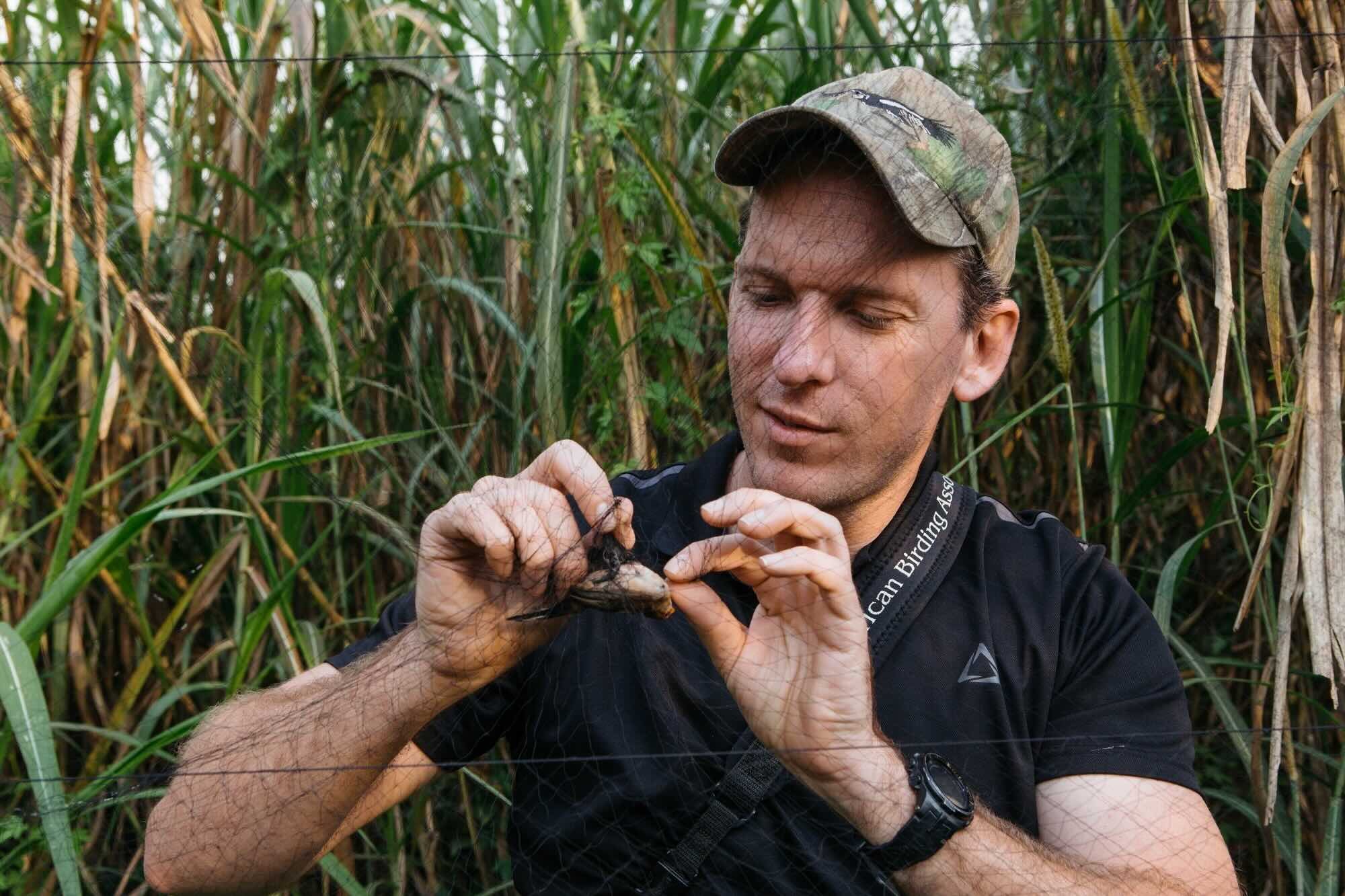 Jared Wolfe extracting a bird from mist nest somewhere inside the Amazon rainforest. Photo: Tritan Spinski
Jared Wolfe extracting a bird from mist nest somewhere inside the Amazon rainforest. Photo: Tritan Spinski
To boot, Vitek Jirinec’s 2021 paper in Science Advances shows how human-induced climate change is affecting the size and shape of the birds in the middle of the Amazon. Their research shows birds are shrinking, their bodies getting smaller but their wings growing longer.
Moreover, this research also reinforces the idea that climate change and forest degradation work together to amplify biodiversity loss. “Ultimately, our study highlights that even in undisturbed rainforests, birds are not immune to climate change, underscoring the urgent need for conservation efforts that address both habitat loss and climate resilience,” said Wolfe
Asad R. Rahmani was the former director of the Bombay Natural History Society (BNHS). His memoir Living with Birds details a life studying and caring for birds. He said Wolfe’s research is an eye-opener for people in India. The study has been possible because of vast amounts of data collected over the years. That kind of data collection has not been done in India.
However, the trend is the same all over the world, including in India: that the birds are vanishing.
The changes in the rainfall patterns and global warming have considerable impact on the arrival and departure pattern of migratory water birds coming from as far as the Arctic region
S.Balachandran, a former deputy director of BNHS, has studied birds at the Point Calimere Bird Sanctuary in Tamil Nadu’s Nagapattinam district for decades. Point Calimere is part of the Great Vedaranyam Swamps, an area of muldflats and wetlands and an important point on bird migration pathways. Birds from more than 15 countries have been found here.
To understand the impact of climate change on migratory birds, Balachandran has worked in Point Calimere for more than 40 years, collecting data on population trends. His is one of the best baseline datasets on winter birds in India.
“The changes in the rainfall patterns and global warming have considerable impact on the arrival and departure pattern of migratory water birds coming from as far as the Arctic region,” said Balachandran.
The shortened monsoon has deprived birds of enough food resources essential to build up body mass in the form of fat required for the long journey to their breeding destinations. During the good monsoon year, they successfully return for their breeding season and arrive in good numbers in the subsequent year. When the monsoon tanks, they don’t return to their breeding sites in large numbers, affecting their breeding success.
“Many passerine migrants—terrestrial birds—which pass through the land route are increasingly getting affected by tree felling, convertion and use of water bodies for road construction and urbanisation. Their impact cannot be assessed as their presence itself is difficult to locate.”
In Keoladeo National Park near Bharatpur in Rajasthan, Rahmani said, there has been a huge decline in birds, particularly raptors and cranes. He remembers seeing 15 to 18 nests of Sarus cranes inside the park and in the surrounding fields in the 1980s. Now, there may be only two or three left. Many people, including him, had seen two pairs of Pallas’s Fish-eagle breeding in the park, and they would raise chicks. Now, though, there is no pair left. Both pairs disappeared in the mid-1990s. The same is the case with vultures in India. A few hundreds used to breed in Keoladeo but no breeding has been seen for the last two decades. Till about the mid-1990s, there were millions of vultures in India, Nepal, Pakistan and Bangladesh but almost 99 per cent have died out, mainly due to drugs like diclofenac. Siberian cranes, too, have disappeared from Keoladeo. The last two birds were seen in the winter of 2001-2002.
Rahmani said species that can adapt to human-made changes in the environment are surviving better, for example, Rose-ringed Parakeet, Jungle Babbler, Tailorbird, Ashy Prinia. House sparrows disappeared from cities and urban habitats because of changes, lack of nesting sites, and disappearance of soft-bodied insects in lawns, open areas, hedges, orchards due to heavy use of pesticides. They are still found in many rural areas and around villages.
However, insectivore birds such as Indian Roller, are declining fast as there are not many insects left. Rahmani thinks some groups of birds are more vulnerable to extinction. For example, bustards, cranes, storks, eagles, and many habitat specialists. The Bengal Florican has gone even from well-known protected areas such as Dudhwa National Park. There have not been many changes in the grasslands of the park, but when the florican goes out of the park, it faces poaching, dogs, and high-tension wires.
“If you start looking at the trend of each species, we get shocking results,” said Rahmani.
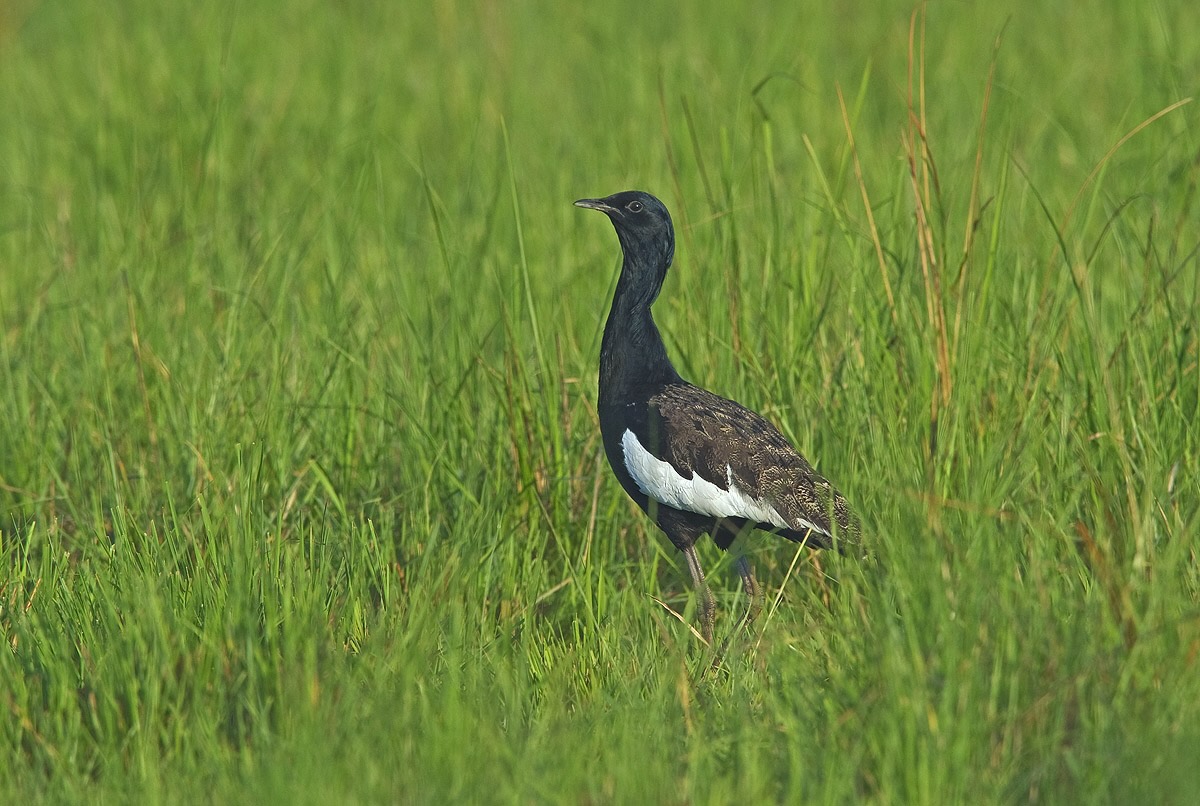 The Bengal Florican is critically endangered, estimates says fewer than 500 of them survive in Indian and Nepal. Photo: Dhritiman Mukherjee.
The Bengal Florican is critically endangered, estimates says fewer than 500 of them survive in Indian and Nepal. Photo: Dhritiman Mukherjee.
Although Wolfe and his team are yet to know the exact mechanisms of how climate change snuffs out birds, their findings suggest that climate change is making survival harder for tropical birds in multiple ways. The pattern of bird loss, where understory insectivores are the most affected, aligns with previous research showing that understory drying reduces invertebrate diversity and biomass, likely leading to declining food availability for these birds.
Additionally, work led by Jirinec at their study site showed that an understory insectivore actively seeks out denser, cooler forest patches during extreme heat, suggesting that birds are experiencing physiological stress from rising temperatures.
Jirinec said their work showed that certain areas on the landscape in lowland Amazonia provide “microclimate refugia” during the dry season. These places stay relatively cooler and wetter during the dry season—the time of year marked by hottest and driest conditions. These refugia—places where populations of organisms can survive during unfavourable conditions—are bottoms of drainages, valleys, and shelter in dense vegetation, logs, and cavities. They showed that birds shifted down-slope and entered cover during the dry season, especially in the afternoon, the hottest and driest times of the year.
Jirinec’s “personal suspicion,” is that birds are trying to avoid physiological stress to themselves, but it is also possible that birds follow their invertebrate prey that is responding to these environmental shifts.
Ultimately, when temperatures remain persistently above 40C, birds face a deadly combination of physiological breakdown and ecological collapse: they overheat, their food sources decline, and their habitat dries out.
“I would argue that either way, hotter and drier conditions—increasingly common under human-caused climate change—are decreasing habitat quality for these insectivorous species because the foraging period or foraging areas are getting constrained,” Jirinec says.
They are currently conducting a bold irrigation experiment in an untouched forest in the Amazon to try and isolate these mechanisms.
In India, heat is a death knell for birds. Their physiology gets undone, especially when temperatures exceed 35–40C. Unlike mammals, birds lack sweat glands, so they rely on evaporative cooling through panting and gular fluttering—rapid throat movements to release heat. But when temperatures soar, especially under high humidity, this cooling mechanism becomes ineffective, and birds can enter heat stress or even fatal hyperthermia. At a wet-bulb temperature (WBT is a measure of the lowest temperature to which air can be cooled by the evaporation of water into the air) of 30C, heat dissipation becomes even more challenging. If the WBT reaches 35C, it is considered the upper survivability threshold for humans in the shade, and for birds, it’s likely just as lethal. When birds can’t cool themselves fast enough, their core body temperature rises, leading to dehydration, organ failure, and death.
Wolfe said birds have incredibly high metabolic rates, and many tropical species rely on insects or fruit for hydration. “Even a 5 per cent drop in body water can be life-threatening for small birds.
Another problem is behavioural stress: in extreme heat, birds seek out shade or dense vegetation, reducing foraging time. This can lead to starvation or increased predation risk, as they become too weak to escape threats. “Ultimately, when temperatures remain persistently above 40C, birds face a deadly combination of physiological breakdown and ecological collapse: they overheat, their food sources decline, and their habitat dries out. This is why heat waves, especially those with high humidity, can cause mass bird die-offs, just as they do with humans,” Wolfe said.
It’s not only extreme heat that is killing birds in India but also other threats like pesticide-driven insect losses, high-tension wires and a bit of hunting, too. There are emerging threats like windmills and solar panels that birds hit and die.
Then there is the India-specific problem of free-ranging stray dogs. Rahmani said they have now become one of the biggest threats to wildlife. They have been photographed even in tiger reserves by camera-traps placed for tiger census.
Rahmani said the stray dog population needs to be curtailed by elimination. Sterilisation works when more than 80 per cent of the dog population is sterilised, but how do you sterilise free-ranging dogs in the landscape? “We need to understand that dogs are predators, and no predator lives in such high numbers. I think every dog should be a pet dog, nothing else,”said Rahmani.
On top of these threats, Rahmani says, climate change-driven uncertainties in the environment such as unpredictable rainfall, extreme heat or cold, early or late flowering of plants, mismatch between early spring and breeding season of birds—all contribute to bird declines and death.
Migratory birds are especially vulnerable to these fluctuations. They have a very delicate energy balance to cover the distance. This was developed across hundreds of years of evolution. Rahmani says if, due to climate change, a migratory bird has to fly 1,000 km more to find suitable nesting areas, it may not have the fat reserves in its body for this extra flight. Even if it reaches suitable nesting areas, it may be too exhausted or weak to breed.
Similarly, many species of birds in mountains live in a narrow band of altitude, say, from 1500 m to 3400 m. Suitable habitat may be found in this band. If, due to climate change, the habitat shifts up or down—as the case may be— the bird may not be able to adjust, or new predators come or existing predators increase in number, all these factors will put additional pressure on the species, resulting in its breeding failure or abandonment of the area. Change of the food supply due to climate change is also a great threat, as is the change in flowering and fruiting time.
According to the State of India’s Birds report, out of 942 species assessed in the report, 39 per cent of the species–367–show clear declines over the past decades and 178 species are classified as “High Conservation Priority.”
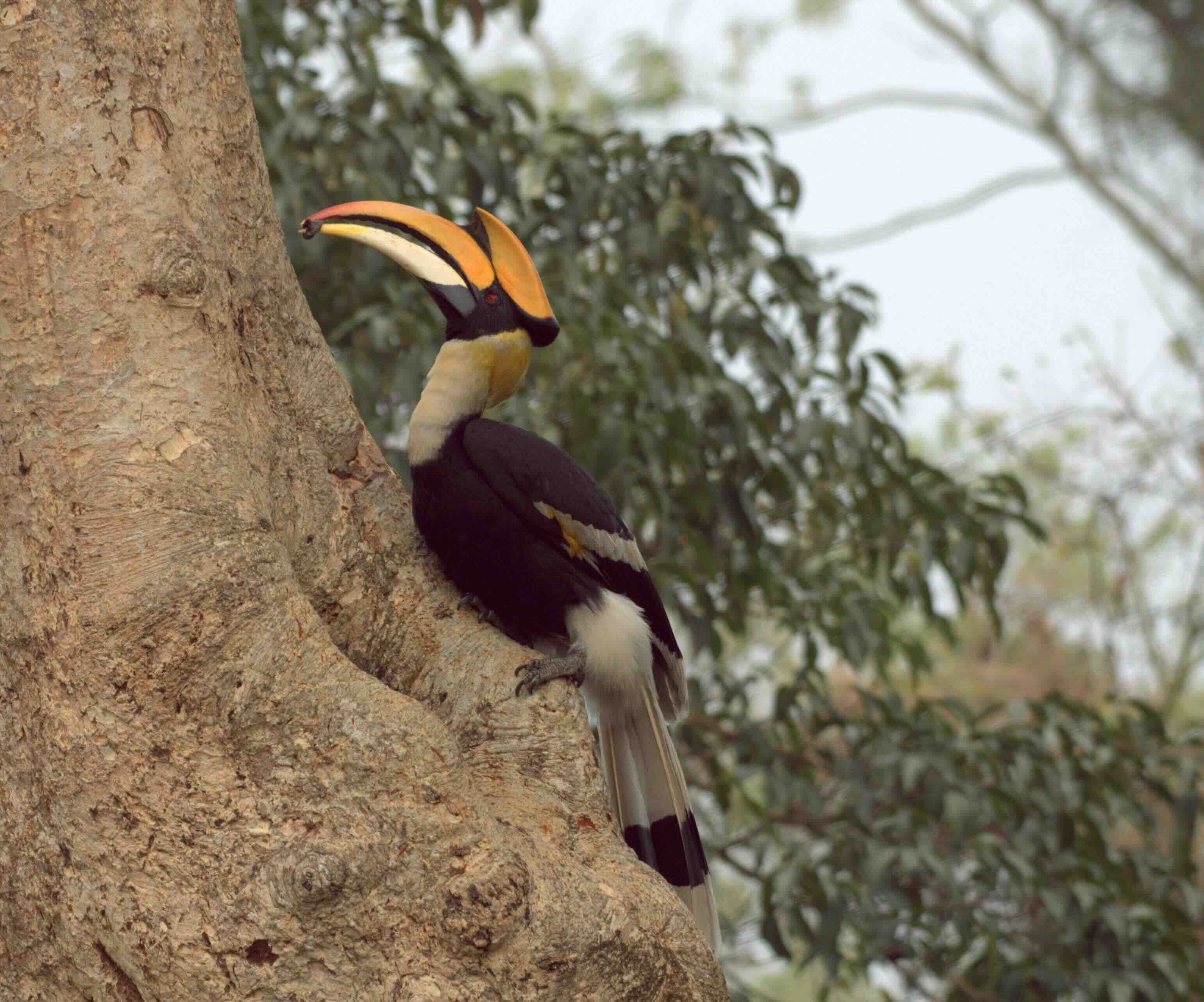 The Great Pied Hornbill is widely distributed in protected forests, but it is vulnerable to hunting and forest degradation. It needs large undisturbed forests in the Western Ghats, north and northeast India. It plays the vital role of seed dispersal in forests. Photo: Asad Rahmani
The Great Pied Hornbill is widely distributed in protected forests, but it is vulnerable to hunting and forest degradation. It needs large undisturbed forests in the Western Ghats, north and northeast India. It plays the vital role of seed dispersal in forests. Photo: Asad Rahmani
Far away from India, in lowland Amazonia too birds are highly vulnerable to rapid changes triggered by warming. Seeing firsthand how climate change is affecting even the most pristine forests and birds, Wolfe feels a sense of urgency to switch “the focus of my research from documenting declines to focus on solutions. It was a turning point in my research.”
He is starting to focus on understanding what makes some areas more resilient than others. This means pinpointing climate refugia: places where forests and their biological communities can persist despite rising temperatures and drier conditions.
For countries like India and others, their findings emphasise the need to shift from a passive conservation approach to an active strategy focused on climate resilience.
“The key is identifying what makes certain areas more resilient to climate change; whether it's cooler microclimates, stable water sources, or intact forest canopies, and using this knowledge to guide conservation, management, and restoration efforts,.” said Wolfe.
The stark warning coming out of their paper is this: If birds in undisturbed Amazonian rainforests are struggling to survive, then species in more degraded landscapes are likely even worse off.
Even the most pristine tropical forests are not immune to climate change. This challenges the long-held belief that intact ecosystems provide a refuge from rising temperatures and drying conditions.
The big-picture implication is that climate change is not just a future threat, it’s already reshaping biodiversity. The fact that bird mortality is directly linked to hotter, drier dry seasons means that species declines are accelerating, even in places without deforestation or habitat destruction.
“The broader consequence is that climate change is likely a silent driver of biodiversity loss worldwide. Many species declines attributed to habitat loss or human disturbance may, in fact, be climate-driven,” Wolfe said.
(Correction: A photo caption in an earlier version of the story, wrongly identified Jared Wolfe as Martin Wolfe.)




